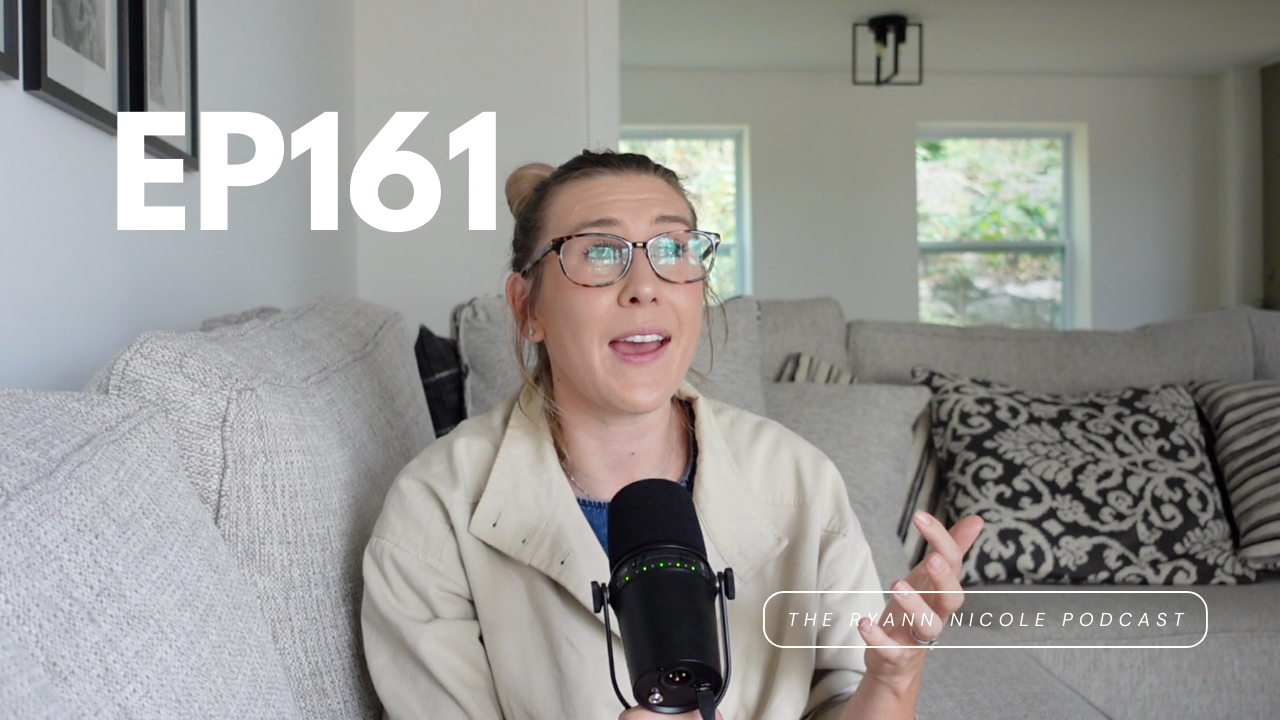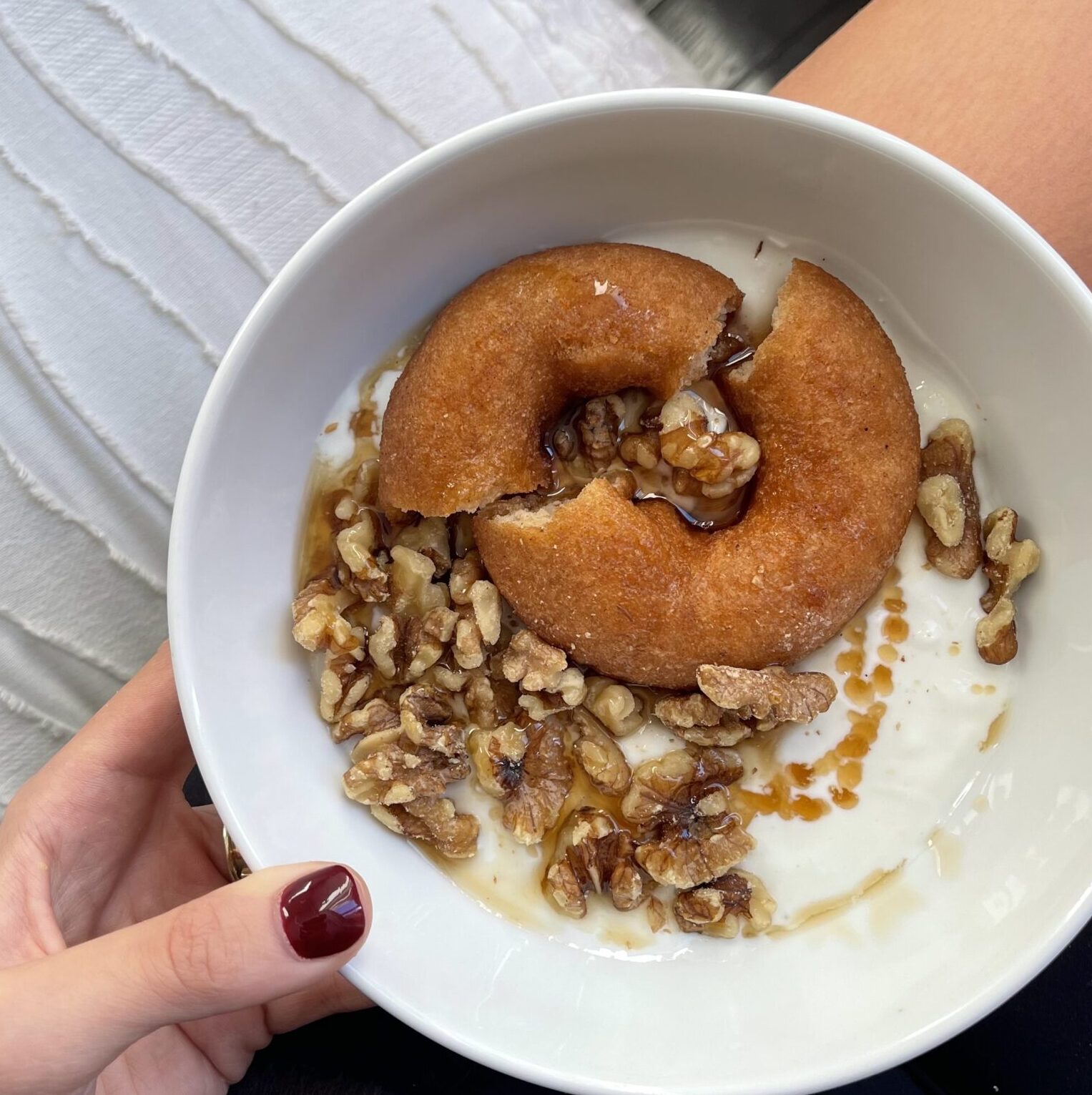Ways to Soothe Yourself That Don’t Involve Food
December 10, 2023

Hey There, I'm Ryann Nicole.
I’m a recovered binge eater who changed the story from something that happened to me to something that happened for me. Now, I’m a licensed therapist teaching you to do the same.
My mission? To help you ditch food stress and live your life with mental peace and freedom every single day!
Let’s get real: when emotions run high, many of us instinctively reach for food. Stress, loneliness, boredom, or just needing a little comfort can send us straight to the fridge. But here’s the thing—while food may provide a quick hit of relief, it often doesn’t address the actual problem behind the feeling. And that’s why it keeps happening.
So, if you’re wondering, why do I keep going back to food when things get rough? know that soothing is actually a core human need. Babies cry, and we soothe them; it’s one of the first things we learn as humans. When you’re upset, stressed, or overwhelmed, soothing isn’t just a “nice-to-have”; it’s your body saying, “Hey, I need help getting back to baseline here.” But there’s a difference between soothing and actually solving the issue at hand.
Coping vs. Solving: Why They’re Not the Same
One of the most important things to understand is that soothing and solving are two separate steps. Think of soothing as a way to get back to a stable place—a point where you feel calm and regulated enough to handle whatever’s going on. Solving, on the other hand, is all about addressing the root cause, whether it’s setting a boundary, having a tough conversation, or making a life change.
Why soothe first? Because if we skip soothing and dive straight into problem-solving, we end up tackling our issues from a highly emotional place, and that can lead to impulsive or regrettable choices. Soothing helps us find calm, so we can return to the problem later with a clear mind.
Soothing is a Core Biological Need (Think Babies!)
From birth, soothing is part of our DNA. Babies cry to signal discomfort, hunger, or tiredness, and they need gentle, calming care to reset. We don’t stop needing regulation as we grow up, either. We just (hopefully) learn how to soothe ourselves rather than relying on someone else to do it for us.
Soothing helps us return to a place of emotional stability, making it easier to address whatever’s going on without acting from a place of stress or frustration. Skipping this step often leads to behaviors that provide quick relief but don’t solve the underlying problem—like reaching for food.
Why Do We Turn to Food for Comfort?
There are several reasons we turn to food when emotions flare, and it’s not as simple as just being “hungry” or “bored.” Here’s a breakdown of the main drivers behind self-soothing with food:
1. Emotional Regulation: Certain foods, especially those high in sugar or fat, can trigger the release of serotonin and dopamine, our brain’s “feel-good” chemicals. This provides a quick sense of relief when emotions feel overwhelming.
2. Habitual Response: Many of us have used food as a coping mechanism since childhood. Over time, it becomes a conditioned response—a knee-jerk reaction to stress or sadness.
3. Cultural Conditioning: Food is deeply tied to comfort in many cultures. We celebrate with food, unwind with food, and often turn to food as a source of consolation. This cultural conditioning reinforces food as a go-to for emotional relief.
4. Stress Response: Stress releases cortisol, the hormone responsible for the body’s fight-or-flight response. Eating can temporarily dampen stress, especially since food is an accessible, quick way to self-soothe.
5. Lack of Alternatives: When food is the only soothing tool we’ve developed, it’s natural to turn to it by default. Without alternatives, food becomes a primary coping mechanism.
Why It’s Hard to Stop Using Food as a Soother
With all these factors, it’s no surprise that food is hard to let go of as a coping tool. It’s familiar, accessible, and effective in the moment. But over time, this habit can create a cycle where emotions lead to eating, which may lead to guilt or shame, which then brings us back to those same emotions. To break the cycle, we need to expand our toolbox with alternative soothing methods.
A helpful reminder here: the problem isn’t that you use food to cope; the problem is simply not having enough other tools. Coping is necessary—it’s just about building more options beyond food.
How to Soothe Without Food
Here are seven non-food ways to self-soothe when emotions run high. The goal isn’t to banish food entirely from moments of comfort, but to give yourself options so food isn’t the only tool you reach for.
Mindfulness Meditation
Meditation can help create space between your emotions and the urge to react with food. Even a few minutes of deep breathing or focusing on your body can help you feel more grounded. Try breath counting, a body scan, or a short mindfulness app session.
Create a Relaxing Ritual
Just as babies respond to warm, gentle care, adults can find comfort in soothing rituals that don’t involve food. Take a warm bath, sip on herbal tea, or listen to calming music. These rituals help you relax without needing a snack.
Connect with Others
Sometimes, talking it out is the best way to soothe. Reach out to a friend, family member, or support group. Sharing what’s on your mind helps you feel heard and validated, which can be incredibly comforting.
Explore Creative Outlets
Creative activities let you channel emotions into something tangible. Whether it’s painting, journaling, dancing, or photography, creative outlets allow you to express what you’re feeling in a way that doesn’t rely on food.
Establish a Regular Movement Routine
Physical activity helps release stress, boosts your mood, and serves as an effective outlet for pent-up emotions. It doesn’t have to be intense; even a gentle walk or some yoga stretches can be grounding and rejuvenating.
Practice Positive Self-Talk
When you’re feeling overwhelmed, try talking to yourself like you’d talk to a friend. Replace harsh, critical thoughts with affirmations like, “I am handling this the best I can” or “It’s okay to feel this way.” Positive self-talk softens your inner dialogue, making it easier to manage emotions without food.
Prioritize Self-Care
When we’re burned out, hungry, or sleep-deprived, emotional eating becomes more tempting. Make self-care a priority: set a regular bedtime, eat balanced meals, and make time for relaxation. Think of self-care as preventive soothing—it keeps you grounded so emotions don’t feel as overwhelming.
Why Soothing First Helps You Solve Later
Soothing yourself is a powerful form of self-care that allows you to approach issues from a place of calm rather than stress. By exploring these non-food ways to soothe, you’re building resilience, compassion, and a new toolkit to handle tough moments without always needing to reach for food.
So the next time you feel the urge to snack when emotions rise, remember: soothe first, then solve. You’re allowed to need comfort, and you’re allowed to find it in ways that don’t rely on food. This process takes practice, so go easy on yourself and find what resonates best for you.
check out the pod
Ways I Can Support You
01 Coaching
Intimate group coaching to break free from binge eating
02 podcast
Real talk on food, mindset shifts, motherhood, and finding peace.
03 support group
A safe space to connect with others on the same journey.
04 free coaching
Have real conversations and hear others share their struggles.
Ryann Nicole
Licensed Therapist, Certified Nutritionist, and Virtual Wellness Coach
Ryann is a licensed therapist and virtual wellness coach who has assisted individuals worldwide in establishing a healthier relationship with food and their bodies.
Are You Ready to Heal Your Relationship With Food?
I understand—it can be overwhelming to figure out where to begin. Let's simplify things and have you start right here:
Why Am I Overeating?
First Steps To Stop Binge Eating
The Ryann Nicole
Podcast
FREE QUIZ
FREE GUIDE
Podcast
the food freedom lab podcast



